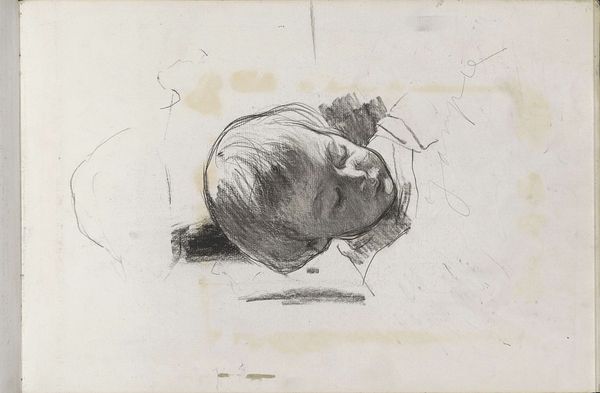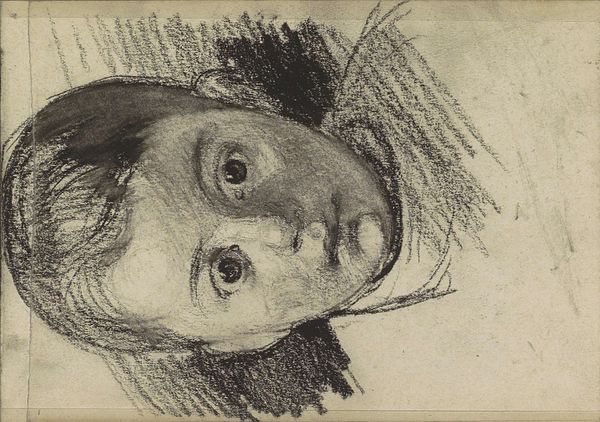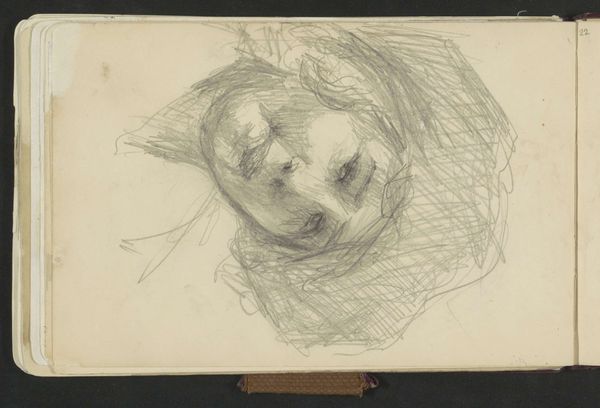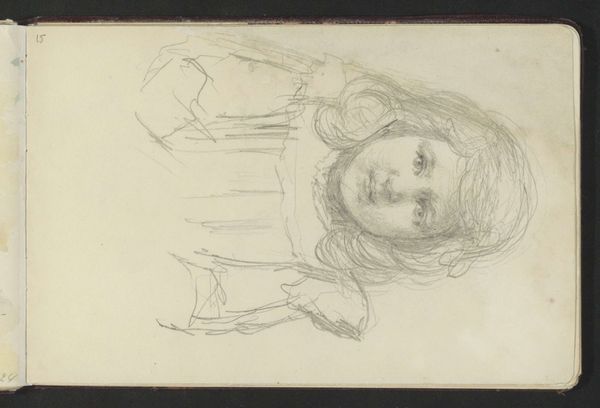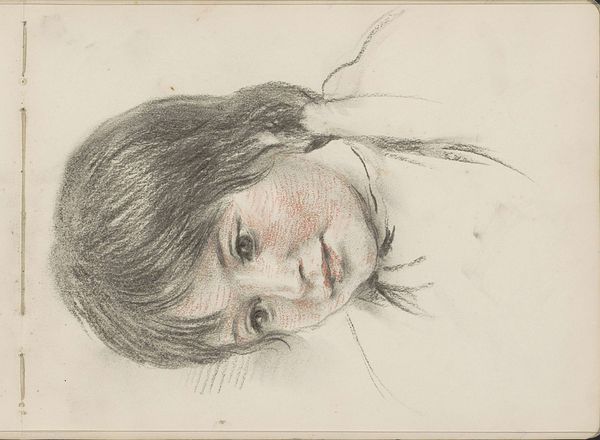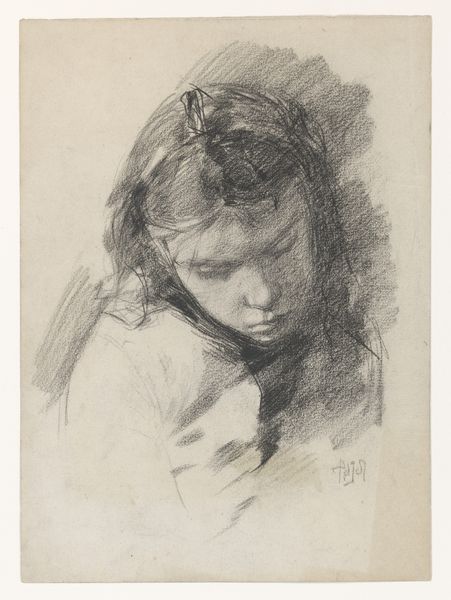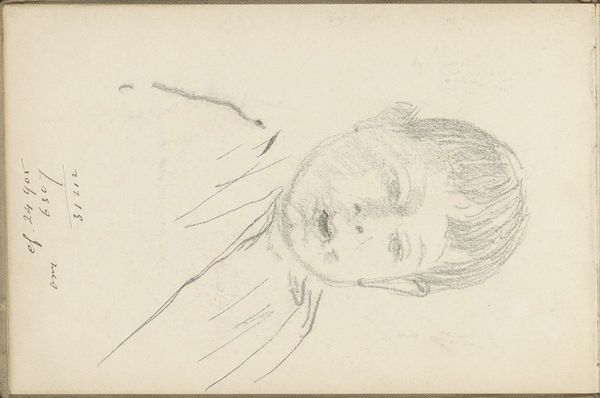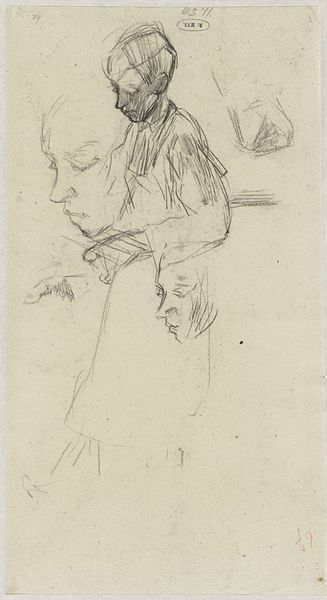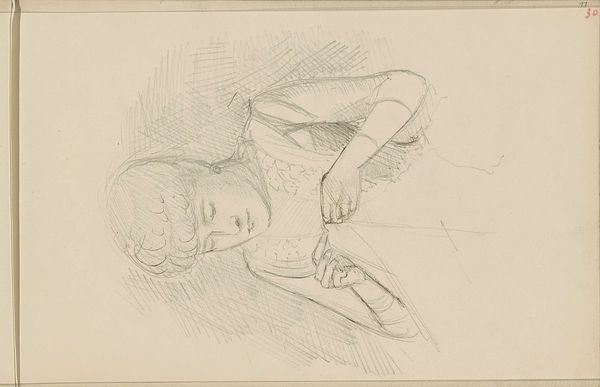
Portret van Johannes René (Jampie) van Vloten als kind c. 1887 - 1892
0:00
0:00
willemwitsen
Rijksmuseum
drawing, pencil
#
drawing
#
figuration
#
child
#
pencil drawing
#
pencil
#
realism
Copyright: Rijks Museum: Open Domain
Curator: Willem Witsen created this portrait, "Portret van Johannes René (Jampie) van Vloten als kind," around 1887-1892. The medium is pencil on paper. Editor: The softness of the pencil strokes gives this such a gentle, vulnerable feeling, almost like catching a fleeting memory. The child’s eyes are captivating. Curator: The choice of pencil really allows for that sense of intimacy. You can see the artist’s hand at work, the way he builds up the tones. I read it as representative of innocence, fragility, the preciousness we attribute to youth. The lack of rigid structure adds to that, right? Editor: Absolutely. Think about the material itself – graphite mined from the earth, shaped, pressed against paper. There's a real physicality there. It also gives you insight to his methods, it really reveals process and what materials he had available, you see these types of works often created for commercial reasons but also intimate reasons. It’s interesting to wonder about the source of the paper too, and how readily available materials would have been at the time. It would speak of relative class position. Curator: I can also imagine the drawing functioning as a sort of memento mori. Representing innocence whilst implicitly foreshadowing loss. These portrait traditions often served such roles, reminding people of life's ephemerality. The scribbles on the upper right perhaps represent some symbolic action, though I can't quite pin down a clear metaphor, so to speak. Editor: Those bold, rapid marks almost mock the realism of the child’s face. They highlight the physical act of mark-making, disrupting the illusion. I keep being drawn to the relationship between skill and raw creation that's laid bare for us. It gives us some unique perspective on class relations as it relates to the sitter as well as the one completing the work. Curator: It really underscores that inherent tension between creation and interpretation. Well, thinking through this image together has certainly added layers of meaning for me. I had not focused on the production, materials and resources the artist needed and from where, before. Editor: I agree. Paying attention to the material conditions in which art is produced really changes how we engage with the subject matter and maker.
Comments
No comments
Be the first to comment and join the conversation on the ultimate creative platform.
